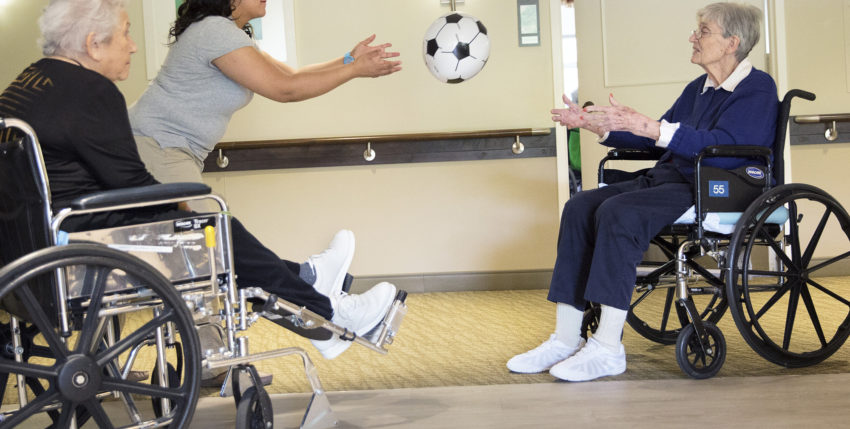
Why small nursing home are better
Many elderly residents are living in conditions where they are at risk of ill-treatment.
Yesterday the Care Quality Commission (CQC), which was set up to regulate the care sector, published a review of 33,000 inspections which it has carried out over the past three years.
As was widely reported yesterday it revealed that a shocking third of nursing homes had failed on safety grounds.
In one case the CQC prosecuted a home where a 62-year-old man fell off a shower chair and broke his neck.
In another case a home was prosecuted after a man died due to a mixup with his medication and in a third case a 79-year-old woman fell against a radiator and suffered serious burns.
What has not been so widely reported is that the CQC found a correlation between the size of a home and the quality of the care it provides. It was not just that smaller homes are safer, the CQC found them to be more caring.
The report concluded: “We have found that services that care for smaller numbers of people often found it easier to demonstrate a good level of responsiveness. For example, by being able to offer activities that are based on people’s individual interests.”This finding matters because it is the smaller, family-run care homes which have been driven out of business over the past two decades as chains of large care homes have come to dominate.
The problem can be traced back to Tony Blair’s Care Standards Act of 2000. It was heavily influenced by lobbying from the large care providers and included numerous pettifogging regulations on room sizes, door widths and the proportion of single rooms.
Obviously in a care home you need doors large enough to get wheelchairs in and out of but the unnecessarily fussy standards were drawn up with one aim in mind: to drive small homes out of business so that the big providers could have the market more or less to themselves.I remember visiting a familyrun care home at the time whose owners were being forced to close it due to the huge expense of conforming to the new Blair regulations. There was a fundamental difference between this establishment and the places where the residents had been forced to relocate: it was a proper home.
It was situated in a lovely country house in Kent with a garden. It had a conservatory and a lounge with a cocktail bar complete with bottles of the residents’ favourite tipples.
There was a rocking chair, a piano and a (properly guarded) open fire. Some of the residents had been able to bring their pets. A terminally ill lady was able to share her last days with her two beloved cats.
Yet the home was being driven out of business because a pen-pusher in Whitehall, lobbied by the big boys of the care industry, had decided that no care home should have more than one shared room for every single room. t was impossible to adapt a listed country house with its large rooms to meet this demand. Moreover, the rule ignored the fact that homes such as this attracted elderly couples. As a result of the legislation, couples who had been married for 60 years suddenly found themselves forcibly separated.
Some of the cold, clinical “granny farms” which replaced many of the family-run care homes turned out to be instruments of property speculation
Southern Cross, which went bust in 2011, foundered after the company sold its properties and leased them back. When occupancy rates fell slightly it could not afford the rent.
It must have looked good on paper for New Labour to set “new standards” for care homes and claim that it was “increasing the quality of provision”. Some measures introduced in the Care Standards Act, such as setting up inspections, may well have helped to uncover bad practices.
Yet the overall result was that Blair’s policies took the heart out of the care home sector.
Not every care home run by a large company fails to come up to standard and the CQC judged a few to be “outstanding”. But the Care Standards Act attracted providers which were property companies in disguise and which turned old people into commodities who could be exploited for profit.
As we now know, many of these large care homes don’t just lack the human touch – they are less safe than the family-run homes which they replaced.
How scandalous that the elderly, who are charged ever higher sums for their care, have been treated in such a way.
